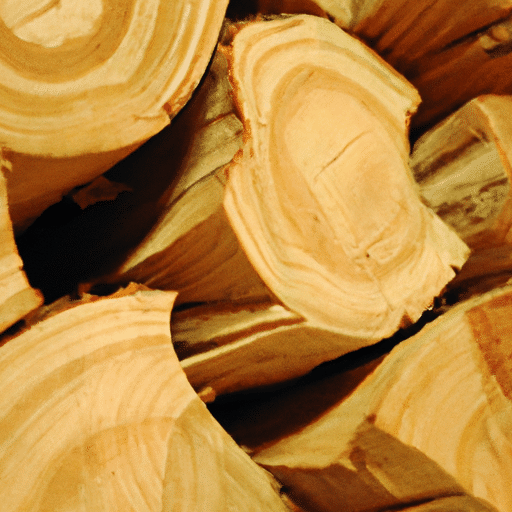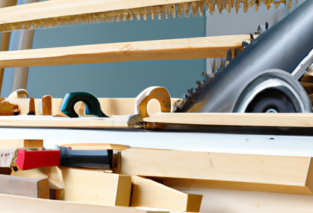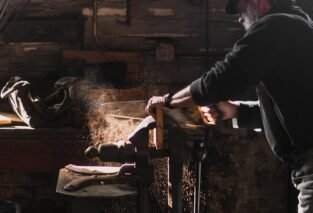In this article, we will be discussing the environmental impact of woodworking and the importance of sustainable practices. You will learn about the negative effects that certain woodworking practices can have on our environment and how we can make a difference by adopting sustainable methods. From reducing waste to using eco-friendly materials, we will explore various ways in which woodworkers can contribute to a greener future. So, let’s dive into the world of woodworking and discover how we can create beautiful pieces while minimizing our impact on the environment.

Overview of Woodworking
Woodworking is a centuries-old craft that involves working with wood to create a wide range of products, from furniture and cabinets to sculptures and decorative items. It is a combination of artistry, craftsmanship, and practical skills that can be found in various cultures around the world.
Definition of Woodworking
Woodworking can be defined as the process of shaping, cutting, and joining wood to create functional or decorative items. It encompasses various techniques such as carving, joinery, and finishing. From hand tools to power tools, woodworking requires precision, creativity, and a deep understanding of the properties and characteristics of different types of wood.
Types of Woodworking Practices
There are several types of woodworking practices that cater to different needs and preferences. Some common types include:
-
Furniture making: This involves crafting tables, chairs, beds, and other pieces of functional furniture. It requires precise measurements, joinery techniques, and a keen eye for aesthetics.
-
Cabinetry: Cabinetry focuses on the creation of storage units such as kitchen cabinets, wardrobes, and bookshelves. It requires expertise in joinery, hardware installation, and the use of specialized tools.
-
Wood carving: Wood carving is the art of creating intricate designs and sculptures by removing wood material with a chisel or gouge. It requires patience, dexterity, and a good eye for detail.
-
Woodturning: Woodturning involves creating cylindrical shapes such as bowls, vases, and wooden handles using a lathe. It requires skill in shaping wood while it rotates at high speeds.
-
Joinery: Joinery is the practice of connecting pieces of wood together without the use of nails or screws. It relies on techniques such as dovetail joints, mortise and tenon joints, and finger joints to create strong and durable connections.
Historical Background of Woodworking
Woodworking has a rich history that dates back thousands of years. From ancient civilizations like the Egyptians and Romans to the skilled craftsmen of the Middle Ages, woodworking has played a significant role in shaping human culture and society.
In ancient times, woodworking was crucial for constructing buildings, ships, and tools. It was an essential skill that provided shelter, transportation, and livelihoods. As civilizations developed, so did the artistry and craftsmanship of woodworking. Intricate wooden structures, ornate furniture, and decorative carvings became symbols of wealth and status.
With the industrial revolution, woodworking shifted from handmade craftsmanship to mass production. Machines replaced hand tools, and new materials such as plywood and particleboard were introduced. While this increased efficiency and accessibility, it also led to a decline in the appreciation for traditional woodworking skills.
In recent years, there has been a resurgence in handcrafted woodworking and a growing focus on sustainable practices. Recognizing the environmental impact of woodworking, many artisans, businesses, and organizations are adopting sustainable approaches to minimize their ecological footprint.
Environmental Impact of Woodworking
Woodworking, like any other industry, has an environmental impact that needs to be addressed. Some of the significant environmental concerns associated with woodworking include:
Deforestation and Habitat Destruction
Wood is the primary raw material used in woodworking. Unsustainable logging practices can lead to deforestation and habitat destruction, impacting delicate ecosystems and biodiversity. Clear-cutting, illegal logging, and the conversion of forests into agricultural land are some of the activities that contribute to deforestation.
To mitigate these impacts, sustainable woodworking practices aim to support responsible forestry management, promote the use of certified sustainable wood, and encourage the conservation of forests and ecosystems.
Air Pollution from Wood Dust and Emissions
Woodworking generates fine dust particles that can pose health risks to workers and contribute to air pollution. Dust control measures, such as proper ventilation, dust collection systems, and personal protective equipment, are essential in minimizing these hazards.
In addition to dust, the woodworking industry also produces emissions from the use of machinery, finishing products, and adhesives. These emissions can contain volatile organic compounds (VOCs) and other harmful substances. Implementing eco-friendly finishes and using low-VOC or water-based adhesives can help reduce air pollution and improve indoor air quality.
Water Pollution from Chemicals and Waste
Traditional woodworking practices involve the use of chemicals for wood treatment, finishes, and cleaning. Improper disposal of these chemicals can lead to water pollution, affecting aquatic life and ecosystems.
To address this issue, sustainable woodworking prioritizes the use of eco-friendly finishes and adhesives that are non-toxic and water-based. Proper waste management and disposal practices are also crucial in minimizing water pollution risks.
Energy Consumption and Carbon Emissions
Woodworking processes, including milling, shaping, and finishing, require energy, which can contribute to carbon emissions and climate change. Utilizing energy-efficient equipment and adopting renewable energy sources can help reduce the carbon footprint of woodworking operations.
Additionally, sustainable practices focus on optimizing production processes to minimize waste and increase efficiency. This not only reduces energy consumption but also saves resources and lowers overall environmental impact.
Impact on Biodiversity
Unsustainable logging practices can disrupt ecosystems and threaten the survival of plant and animal species. By supporting responsible logging, using certified sustainable wood, and protecting forest habitats, sustainable woodworking aims to preserve biodiversity and protect vulnerable species.

Sustainable Practices in Woodworking
Recognizing the environmental challenges associated with woodworking, the industry is embracing sustainable practices to minimize environmental impact and foster a more responsible approach. Some key sustainable practices in woodworking include:
Use of Certified Sustainable Wood
Certified sustainable wood, such as FSC (Forest Stewardship Council) or PEFC (Programme for the Endorsement of Forest Certification) certified wood, is sourced from forests managed responsibly. These certification programs ensure that wood is harvested sustainably, respecting ecological, social, and economic aspects.
By using certified sustainable wood, woodworking businesses contribute to the preservation of forests, support local communities, and minimize the environmental impact of their activities.
Adoption of Responsible Logging Practices
Sustainable woodworking promotes responsible logging practices that prioritize the conservation of forests and ecosystems. This includes selective logging, reforestation efforts, and avoiding the use of endangered or protected wood species.
Partnering with suppliers who adhere to responsible logging practices and supporting initiatives that promote sustainable forestry are essential steps towards minimizing the environmental impact of woodworking.
Promotion of Recycling and Upcycling
Wood waste is a significant concern in woodworking, particularly in larger-scale operations. By promoting recycling and upcycling, woodworking businesses can minimize waste sent to landfills and reduce the demand for virgin wood.
Recycling wood waste into new products, such as furniture, flooring, or wood pellets for energy generation, helps close the loop and extends the lifespan of wood resources.
Reducing Waste through Efficient Production
Efficiency is crucial in sustainable woodworking. Optimizing production processes, reducing material waste, and maximizing the use of every piece of wood contribute to minimizing the environmental impact.
Implementing lean manufacturing principles, utilizing computer-aided design (CAD) and computer-aided manufacturing (CAM) technologies, and accurately calculating material needs can help reduce waste and improve resource efficiency.
Utilizing Eco-Friendly Finishes and Adhesives
Traditional wood finishes and adhesives often contain toxic chemicals that are harmful to the environment and human health. Switching to eco-friendly options, such as water-based finishes and adhesives with low VOC content, significantly reduces the environmental impact of woodworking.
These eco-friendly alternatives provide comparable results to traditional products while minimizing air pollution and reducing exposure to harmful substances.
Benefits of Sustainable Woodworking
Implementing sustainable practices in woodworking offers several significant benefits for both the environment and society. Some of the key benefits include:
Conservation of Forests and Ecosystems
Sustainable woodworking contributes to the conservation of forests and ecosystems by supporting responsible forestry management and the use of certified sustainable wood. It helps protect biodiversity, prevent deforestation, and maintain the vital functions that forests provide, such as carbon sequestration and climate regulation.
Enhancement of Air and Water Quality
By reducing air pollution through dust control measures and the use of eco-friendly finishes and adhesives, sustainable woodworking improves the quality of indoor and outdoor air. Minimizing water pollution risks by adopting responsible waste disposal practices and utilizing non-toxic materials also contributes to cleaner water sources.
Reduction of Carbon Footprint
Through energy-efficient operations, the use of renewable energy sources, and optimizing production processes to minimize waste, sustainable woodworking reduces its carbon footprint. By mitigating greenhouse gas emissions, woodworking businesses play a role in addressing climate change and promoting a more sustainable future.
Preservation of Biodiversity
Sustainable woodworking practices prioritize the use of certified sustainable wood and responsible logging practices. By actively supporting the preservation of forests and protecting habitats, woodworking businesses contribute to the preservation of biodiversity and the survival of endangered species.
Creation of a Circular Economy
By promoting recycling and upcycling, woodworking businesses actively participate in the creation of a circular economy. This approach aims to minimize waste, maximize resource efficiency, and close the loop by transforming waste into new products.

Challenges in Implementing Sustainable Woodworking
While the adoption of sustainable practices in woodworking is gaining momentum, several challenges need to be addressed to achieve widespread change. Some of the significant challenges include:
Lack of Awareness and Education
Many individuals and businesses in the woodworking industry may not be aware of the environmental impact of their practices or the availability of sustainable alternatives. Raising awareness and providing education on sustainable woodworking practices are crucial in driving positive change.
Cost Considerations and Market Demand
Sustainable materials and practices in woodworking may come at a higher initial cost compared to conventional methods. The cost of certified sustainable wood, eco-friendly finishes, and energy-efficient equipment can pose challenges, especially for smaller businesses. However, as market demand for sustainable products grows, the cost differentials are expected to decrease.
Regulatory Barriers and Enforcement
Lack of consistent regulations and enforcement can hinder the adoption of sustainable practices in woodworking. Governments and regulatory bodies need to establish clear guidelines and standards to ensure the industry’s compliance with sustainable practices.
Access to Sustainable Wood Sources
Availability and access to certified sustainable wood can be a challenge, particularly in regions where responsible forestry management practices are not well-established. Collaboration with suppliers, supporting sustainable forestry initiatives, and exploring alternative wood sources can help address this challenge.
Resistance to Change in Traditional Practices
Resistance to change and a preference for traditional practices can pose challenges in implementing sustainable woodworking. Overcoming this resistance requires highlighting the benefits of sustainable practices, providing incentives for change, and fostering a culture of environmental responsibility.
Innovations in Sustainable Woodworking
In order to further mitigate the environmental impact of woodworking, the industry is embracing innovation and exploring new technologies and practices. Some of the notable innovations in sustainable woodworking include:
Development of Engineered Wood Products
Engineered wood products, such as plywood, laminated veneer lumber (LVL), and medium-density fiberboard (MDF), offer alternatives to solid wood by utilizing wood fibers and scraps. These products provide consistent quality, greater stability, and reduced waste compared to traditional solid wood.
Engineered wood products also allow for the use of fast-growing and renewable wood species, further reducing the pressure on natural forests.
Advancements in Wood Treatment Technologies
Wood treatment technologies have evolved to provide environmentally friendly options for protecting wood against decay, pests, and weathering. Technologies such as heat treatment, thermal modification, and preservatives derived from natural sources offer alternatives to toxic chemical treatments.
These advancements in wood treatment enable woodworking businesses to provide more sustainable and durable wood products without compromising on performance.
Integration of Digital Tools for Precision and Waste Reduction
The integration of digital tools, such as computer numerical control (CNC) machines and laser cutting technology, has revolutionized woodworking. These tools enable precise cuts, efficient material usage, and reduced waste.
By optimizing material yield and minimizing errors, digital tools contribute to resource efficiency and waste reduction in woodworking operations.
Exploration of Alternative Materials for Specific Applications
Innovation in woodworking extends beyond wood itself. The industry is exploring alternative materials, such as bamboo, recycled wood fiber composites, and bio-based materials, for specific applications.
These alternative materials offer unique characteristics, provide sustainable alternatives to traditional wood products, and expand the range of design possibilities in woodworking.
Collaborative Initiatives and Research
Collaboration between various stakeholders, including government bodies, industry associations, designers, and research institutions, is essential for driving innovation in sustainable woodworking. By sharing knowledge, resources, and expertise, these collaborations foster the development of new technologies, practices, and sustainable solutions.

Collaboration with Stakeholders
Achieving sustainable woodworking practices requires collaboration among various stakeholders. Here are some key stakeholders that play a crucial role in the industry’s sustainability efforts:
Government and Regulatory Bodies
Government bodies play a vital role in shaping environmental regulations and policies that influence the woodworking industry. Collaboration between woodworking businesses and regulatory bodies promotes the development of clear guidelines, standards, and incentives for sustainable practices.
Wood Industry Associations and Certifications
Wood industry associations provide platforms for knowledge sharing, networking, and collaboration among woodworking businesses. These associations, along with certifications like FSC and PEFC, play a crucial role in promoting responsible forestry management and sustainable practices within the industry.
Designers, Architects, and Consumers
Designers and architects have the power to influence the demand and design choices in the woodworking industry. By prioritizing sustainable materials and practices in their designs, they can drive market demand for sustainable woodworking products.
Consumers also play a critical role in demanding and supporting sustainable woodworking practices. By making informed purchasing decisions and choosing products with certified sustainable wood, eco-friendly finishes, and responsible manufacturing practices, consumers can drive positive change in the industry.
Non-Governmental Organizations and Environmental Groups
Non-governmental organizations (NGOs) and environmental groups play an important role in advocating for sustainable woodworking practices. By raising awareness, conducting research, and collaborating with woodworking businesses, they promote the adoption of sustainable practices and provide guidance on environmental best practices.
Education and Research Institutions
Education and research institutions play a pivotal role in advancing sustainable woodworking practices. By providing training, conducting research, and developing innovative solutions, they contribute to the knowledge base and promote the adoption of sustainable practices in the industry.
Case Studies on Sustainable Woodworking
Numerous case studies highlight the successful implementation of sustainable practices in the woodworking industry. These case studies demonstrate the positive environmental impacts and economic benefits of sustainable woodworking. Here are a few examples:
Leading Examples of Sustainable Woodworking Projects
One example of sustainable woodworking is the Bullitt Center in Seattle, Washington. This commercial office building was constructed using sustainably sourced wood, energy-efficient designs, and eco-friendly finishes. The Bullitt Center is a model of sustainable construction and showcases the potential of sustainable woodworking in large-scale projects.
Success Stories in Achieving Environmental Goals
The IKEA Group, a global furniture retailer, has made significant strides in sustainable sourcing and responsible forestry management. With a commitment to only using certified sustainable wood in its products, IKEA has become a leader in promoting sustainable woodworking practices within the furniture industry. Their initiatives have led to positive environmental impacts, including reduced deforestation and increased sustainable forestry practices.
Innovative Solutions Implemented by Woodworking Businesses
Custom Cabinet Creations, a woodworking business based in California, has implemented innovative practices to reduce waste and promote sustainable woodworking. They utilize computer-aided design (CAD) software to optimize material usage, recycle wood waste for energy generation, and embrace eco-friendly finishes. These sustainable initiatives have not only reduced their environmental footprint but also improved operational efficiency.
Positive Impacts on Local Communities
The Green Woodworking Project in the United Kingdom focuses on providing sustainable woodworking education, skills training, and employment opportunities to individuals with disabilities. This community-based initiative promotes responsible forestry practices, the use of locally sourced wood, and the creation of sustainable products. The project has had positive social and environmental impacts, empowering individuals and preserving traditional woodworking skills.
These case studies highlight the potential for sustainable woodworking to create positive change, both environmentally and socially.

Future Outlook and Trends
The future of woodworking lies in sustainable practices and innovation. As the world becomes more environmentally conscious, the woodworking industry is expected to embrace sustainable approaches and prioritize environmental responsibility. Some key trends and developments to look out for include:
Growing Demand for Sustainable Woodworking
Increasing awareness about environmental issues and a growing consumer preference for sustainable products are driving the demand for sustainable woodworking. As more individuals, businesses, and organizations become conscious of their environmental impact, the demand for products made with certified sustainable wood and eco-friendly finishes is expected to rise.
Advancements in Sustainable Materials and Practices
Advancements in sustainable materials, such as engineered wood products and alternative materials, will continue to expand the possibilities in woodworking. Innovations in wood treatment technologies and eco-friendly finishes will also provide more sustainable options for woodworkers.
Additionally, practices such as recycling, upcycling, and waste reduction will be further integrated into woodworking operations, paving the way for a more circular economy within the industry.
Integration of Technology for Eco-Friendly Production
The integration of digital tools, such as CNC machines and automation, will continue to revolutionize woodworking by enabling precision, efficiency, and waste reduction. Technology will play a crucial role in optimizing material usage, streamlining production processes, and minimizing the environmental impact of woodworking operations.
Increasing Focus on Circular Economy Principles
The woodworking industry will increasingly prioritize circular economy principles, focusing on resource efficiency, waste reduction, and the reuse or recycling of materials. Collaboration between stakeholders, research institutions, and industry associations will drive the development of innovative solutions and best practices.
Potential Policy Changes and Global Collaborations
Policy changes and collaborations at a global level will play a pivotal role in promoting sustainable woodworking practices. Governments and international organizations are expected to strengthen regulations, establish standards, and provide incentives for sustainable practices. Collaboration between countries, industry associations, and NGOs will foster knowledge sharing and the development of global sustainability initiatives.
Conclusion
As the importance of sustainability becomes increasingly evident, implementing sustainable practices in woodworking is crucial. By prioritizing responsible forestry management, reducing waste, utilizing eco-friendly materials, and embracing innovative technologies, woodworking businesses can minimize their environmental impact and contribute to a more sustainable future.
Balancing economic viability with environmental responsibility is key to the long-term success of the woodworking industry. By adopting sustainable practices, we can conserve forests and ecosystems, enhance air and water quality, reduce our carbon footprint, preserve biodiversity, and create a circular economy within the industry.
It is essential for stakeholders, including woodworking businesses, governments, industry associations, designers, and consumers, to prioritize sustainability and collaborate in driving positive change. By working together, we can ensure the continued success of woodworking while minimizing its environmental impact and reaping the benefits of sustainable practices.
The future of woodworking lies in sustainable practices and innovation. By embracing sustainable approaches, the woodworking industry can thrive while minimizing its environmental impact and fostering a more responsible and sustainable future.





